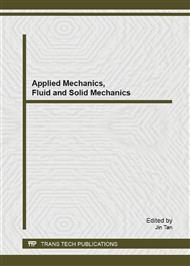p.3
p.9
p.15
p.21
p.27
p.32
p.39
p.45
Interference Effect Tall Building to Fluctuations Wind Load
Abstract:
The construction of another tall building in the close vicinity of existing building may lead to a modification in its response. Therefore, the wind loads on buildings in realistic environments may be considerably different from these measured on isolated buildings. Neighboring buildings may either decrease or increase the flow-induced forces on a structure, depending mainly on the geometry and arrangement of these buildings, their orientation with respect to the direction of flow and upstream terrain conditions. In this study deals with mean and fluctuating as well as their spectra on a building due to an adjacent building of side ratio 1 for wind direction from 0 to 45 degree and separation distance between two models. Interference effects were presented in the form of interference factors. And experiments were compared to these measured on isolated building.
Info:
Periodical:
Pages:
9-14
Citation:
Online since:
December 2013
Authors:
Keywords:
Price:
Сopyright:
© 2014 Trans Tech Publications Ltd. All Rights Reserved
Share:
Citation:


